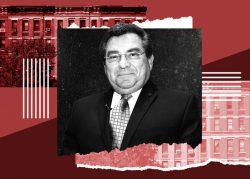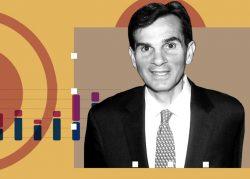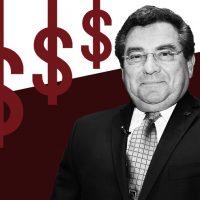 NYC’s largest multifamily lender says rent collections are at pre-pandemic levels
NYC’s largest multifamily lender says rent collections are at pre-pandemic levels
Trending
Dramatic reversal buoys city’s biggest multifamily bank lender
Loan deferrals way down, earnings way up at New York Community Bank

New York Community Bank said Wednesday that nearly all of its loans in deferral have become current.
The multifamily lender also reported $189.4 million in revenue in the fourth quarter, a 42 percent increase from the same period in 2019. For the year, revenue was up 23 percent compared to 2019, at $650 million, narrowly exceeding analysts’ predictions.
The earnings call followed an overhaul of New York Community Bank’s leadership. Longtime CEO Joe Ficalora, who grew the institution from Queens Savings Bank to the largest multifamily bank lender in New York City, announced he would step down in December. Days later, chief financial officer Thomas Cangemi assumed the role of CEO.
Read more
 NYC’s largest multifamily lender says rent collections are at pre-pandemic levels
NYC’s largest multifamily lender says rent collections are at pre-pandemic levels
 Signature achievement: Bank’s loan deferrals down to 9%
Signature achievement: Bank’s loan deferrals down to 9%
 Top multifamily lender lays out the terms of relief for landlords
Top multifamily lender lays out the terms of relief for landlords
The bank reported a dramatic improvement in loan deferrals, from a high of 14 percent or $6.1 billion at the end of the third quarter, to only $84 million. Still, many other borrowers are getting a break on payments: Six percent of the bank’s loans are paying interest only, an option that other lending institutions have also offered.
Some expect the bank will diversify its $32.3 billion in multifamily holdings, which represent more than half of the bank’s $56 billion loan portfolio. But while the pandemic has scrambled investor expectations in some sectors, the bank said that some multifamily assets are now among its best performers.
Overall, multifamily has been a relatively safe haven for investors during the pandemic, but New York City’s rent-regulated apartments have struggled since revisions to the rent law in 2019 severely limited landlords’ ability to raise rents.
With more than half of New York Community Bank’s multifamily portfolio under rent regulation, the legislation figures large in the bank’s future. Some landlords have already seen their assets fall into distress under the new regulatory regime.
It is unclear whether that distress will become more widespread or if New York Community Bank will diversify its holdings. So far it has renewed its commitment to the asset class, even as other investors retreat from it. Borrowers with rent-regulated assets are faring better than market-rate apartments, Cangemi said.
Borrowers that have taken the bank’s offer to pay only interest on their loans have tended to be owners of market-rate apartments, Cangemi said, while those that are entirely rent-regulated are paying principal and interest.
“They’re collecting [rent], there is no issue,” Cangemi said, of the bank’s rent-regulated borrowers. “It’s a resilient market for that niche business, and we’re going to continue to be a dominant force in that niche.”
That stands in sharp contrast to a recent report from a landlord trade association that New York City rent-regulated tenants owe $1 billion in back rent.
Despite its optimistic outlook on rent-regulated stock, bank officials signaled the Queens-based lender may diversify its holdings in the near future.
In 2019, Ficalora said that the bank wanted to be a “successful acquirer of other banks” after changes to the Dodd-Frank Act lifted a regulatory cap for banks. Cangemi said the bank is considering an acquisition now.
“To change the diversity of the lending book, take on new products and drive this into a commercial lending enterprise, it will be a mergers and acquisitions transaction that does so,” said Cangemi.




